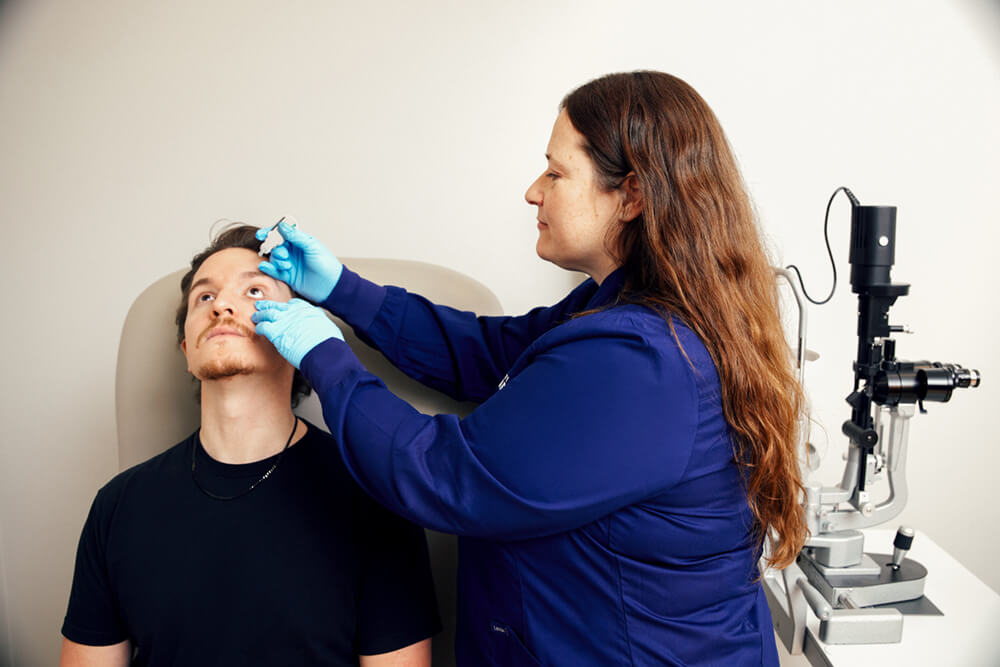
Vitreous Disease refers to a group of conditions that affect the vitreous, a gel-like substance that fills the back of the eye. At University Retina, our team of specialists is dedicated to providing expert care and treatment for those with vitreous disease, using the latest technologies and techniques to preserve and restore vision.
What is Vitreous Disease?
Vitreous disease refers to a group of conditions that affect the vitreous humor, which is the clear gel-like substance that fills the inside of the eye. One of the most common types of vitreous disease is posterior vitreous detachment or PVD.
While PVD can be a normal part of the aging process and typically does not require treatment, it can be a risk factor for other eye conditions, such as retinal tears or detachment. Therefore, if you experience symptoms of PVD, it is important to consult your eye doctor at University Retina for a comprehensive eye exam to ensure you are not at risk for vision loss.
What is Posterior Vitreous Detachment?
Posterior vitreous detachment is a condition that occurs when the vitreous humor, a gel-like substance that fills the inside of the eye, separates from the retina at the back of the eye. It is a normal part of aging and typically occurs in adulthood.
As you age, the vitreous humor naturally begins to shrink and become more liquid, which can increase the risk of PVD. However, PVD can also occur due to trauma to the eye or underlying medical conditions.
Although PVD is usually not harmful, it can increase the risk of retinal tears or detachment and bleeding inside the vitreous cavity. This is because, as the vitreous shrinks, it can pull and tug on the retina, causing it to potentially tear or detach from the back wall of the eye.
These conditions can cause permanent vision loss if left untreated.
What Are the Symptoms of Posterior Vitreous Detachment?
The symptoms of PVD can vary from person to person and can range from mild to severe. Here are some common symptoms:
Floaters
Small, dark spots or specks that appear to float in the field of vision. These floaters are caused by clumps of vitreous gel that break loose and float around in the eye.
Flashes of Light
Brief flashes or arcs of light that appear in the peripheral vision. These flashes are caused by the vitreous gel tugging on the retina as it detaches.
Reduced Vision
Some people may experience a sudden loss of vision in the affected eye, but this is rare.
A Curtain or Veil in the Field of Vision
In severe cases, a dense curtain or veil may appear in the field of vision, indicating a retinal tear or detachment.
If you experience any of these symptoms, it’s essential that you schedule an appointment to see your eye doctor at University Retina right away, as you may be at risk for permanent vision loss.
How is Posterior Vitreous Detachment Treated?
In most cases, PVD does not require any treatment, and the symptoms may gradually improve over time. However, in some cases, PVD can lead to complications such as retinal tears, which may require immediate medical attention.
You should visit your eye doctor if you experience any sudden changes in vision or see flashes of light, as this may indicate a more serious complication. If a retinal tear or detachment is detected, surgery may be necessary to repair the tear and prevent further damage.
This may involve a procedure called vitrectomy, which involves removing the vitreous gel from the eye. It is important to note that PVD is a natural part of aging and, in many cases, cannot be prevented.
Maintaining regular eye exams can help monitor the health of your eyes and detect any complications early.





